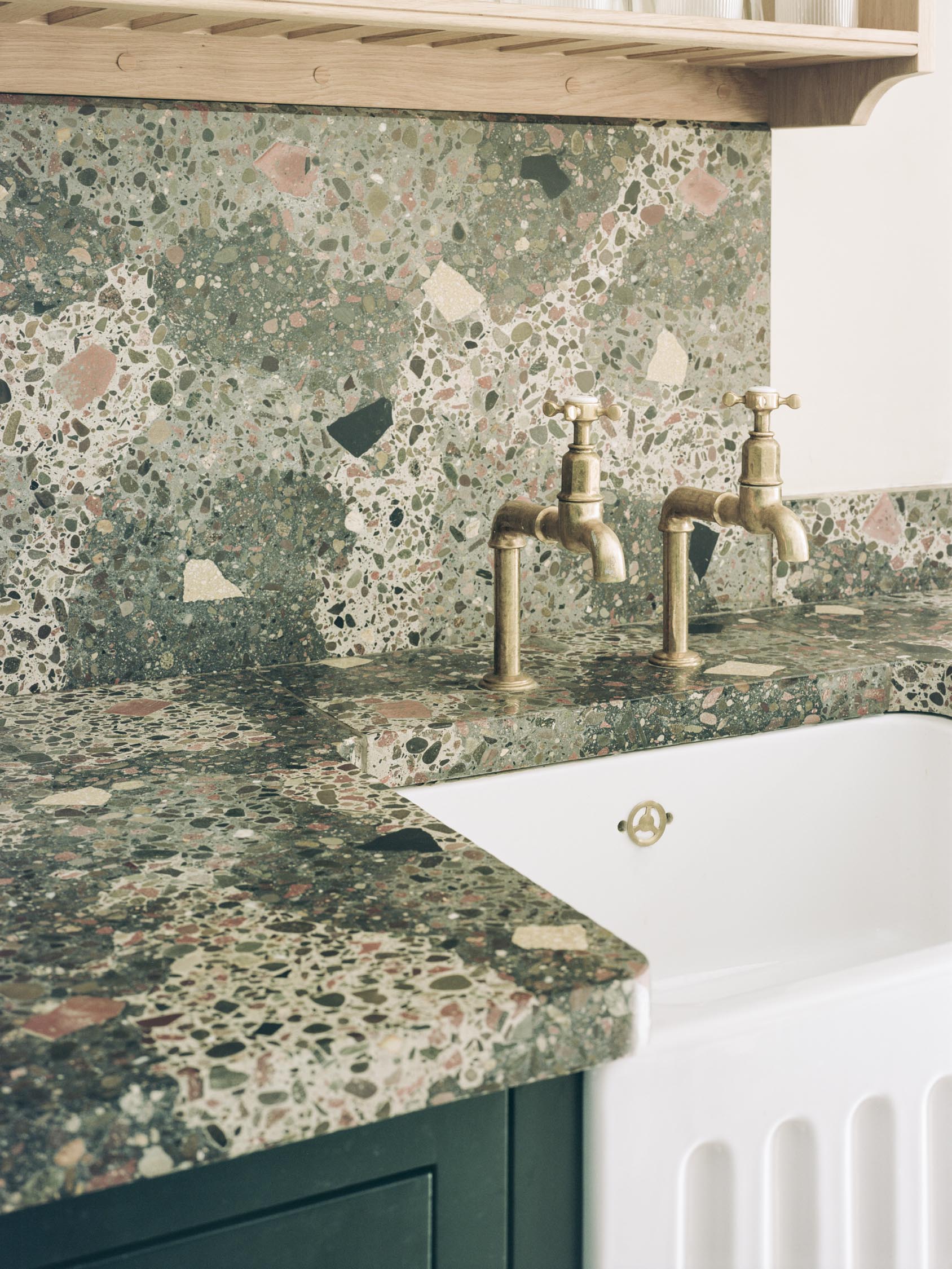


















Can you reinvent a Victorian house while staying true to its historical character?
[Y/N] Studio have completed a reconfiguration and extension of the lower ground floor of a split level Victorian house in Hackney. In opposition to prevailing trends towards open-plan white spaces and boxy extensions, we pursued a more nuanced approach which responds to the householders’ particular tastes and interests, as well as one of the client’s work as a building conservationist.
A series of intimately connected spaces replace the previous layout, which had divided the front and back of the house and ignored the garden. Now, a new glazed study offers privacy and views into the south-facing garden, which has been relandscaped and planted for colour, scent, and to promote biodiversity. Under the stairs a small utility room and toilet are provided behind panelled walls and hidden doors. A large L-shaped kitchen takes advantage of the full width of the house and offers views from back to front gardens through its now uninterrupted length.
At the rear a new glass house in the form of a lean-to accommodates a bright dining space adjacent to the kitchen. The monopitched roof reflects that of the distinctive butterfly roofs of the terrace. Inside, taking inspiration from an antique Welsh dresser, the oak timber frame of the glass house is formed into a wall of shelving which can be used for display and storage. Externally, the frame introduces a pop of green painted aluminium to differentiate the new glass house from the more traditional spaces inside. Otherwise, the material and colour palette was influenced by the clients’ love for early-20th-century paintings of domestic interiors, for example by Harold Harvey, embracing deep hues in the circulation spaces and kitchen and opening up to lighter natural oak in the glass house.
It was important to introduce pattern and texture in the interior design, while using sustainable materials. A reclaimed parquet floor salvaged from a school sports hall provides character and a lasting, high-quality finish. The kitchen worktop- by Granby Workshop – is formed from 70% reclaimed materials, hand-marbled to create unique surface patterns. In the glass house a timber terrazzo floor reusing waste wood introduces a sense of playfulness and warmth, whilst harmonizing with the oak frame.
Green House proves that a collaboration between architect and client can lead to an outcome which might have been unimaginable to either party at the beginning of the design process yet is all the more powerful as a result.














Green House
Location: Hackney, London
Type: Residential
Size: 50m2
Client: Confidential
Status: Completed
Date: 2019 - 2022
Location: Hackney, London
Type: Residential
Size: 50m2
Client: Confidential
Status: Completed
Date: 2019 - 2022
Collaborators:
Architect: [Y/N] Studio
Project Team: Alex Smith, Maegan Icke
Structural Engineer - Webb Yates
Building Control - Quadrant Approved Inspector
Main Contractor: John Goudie
Kitchen: Luckin Kitchens
Worktops: Granby Workshop
Photography by Lorenzo Zandri
Architect: [Y/N] Studio
Project Team: Alex Smith, Maegan Icke
Structural Engineer - Webb Yates
Building Control - Quadrant Approved Inspector
Main Contractor: John Goudie
Kitchen: Luckin Kitchens
Worktops: Granby Workshop
Photography by Lorenzo Zandri